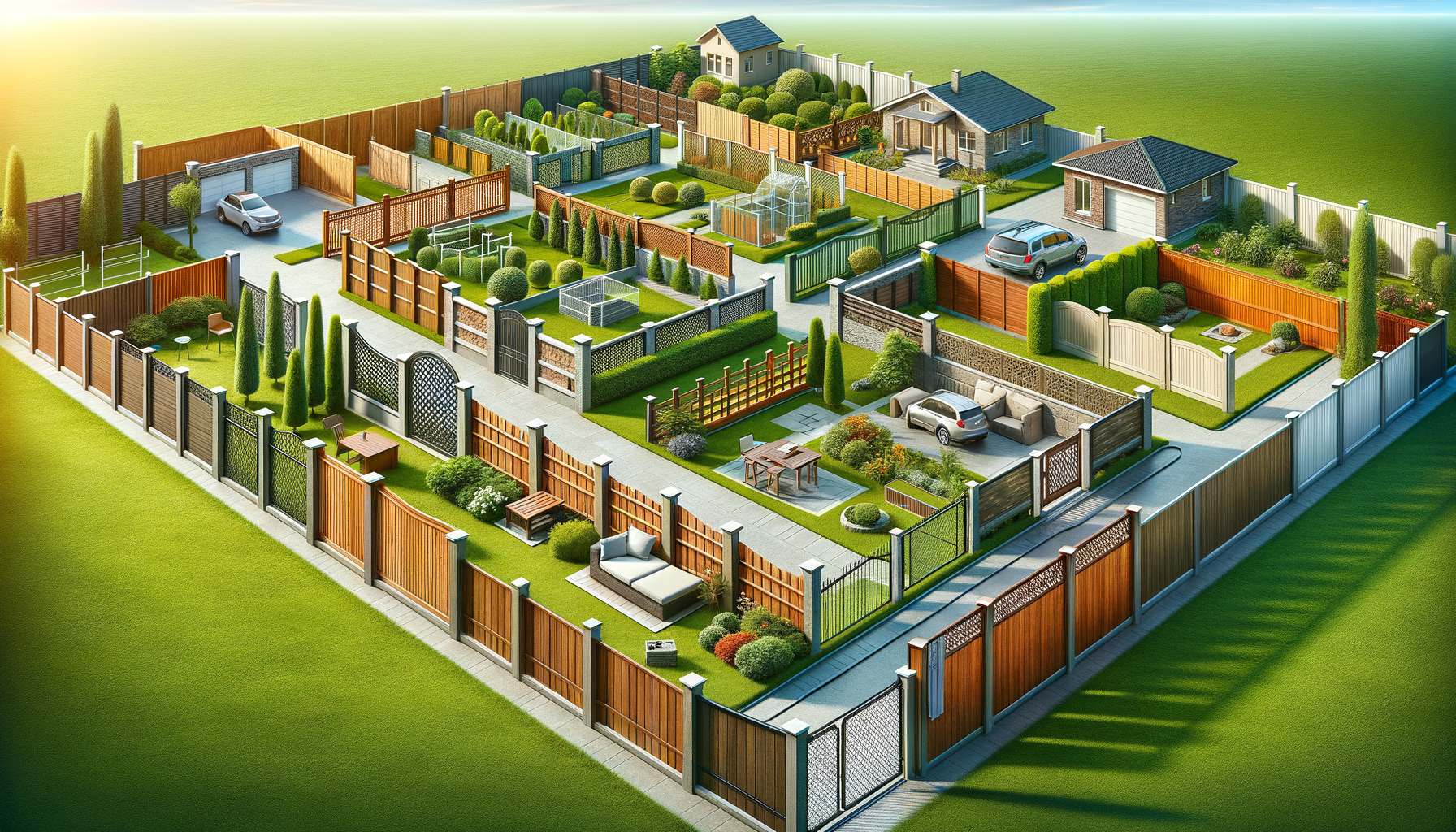Understanding Your Needs and Preferences
Before embarking on the journey of home fence installation, it’s crucial to understand your specific needs and preferences. A fence serves multiple purposes, ranging from privacy and security to aesthetic appeal and boundary demarcation. Identifying the primary purpose of your fence will guide you in selecting the most suitable type. For instance, if privacy is your main concern, opting for a tall wooden or vinyl fence might be ideal. On the other hand, if enhancing the curb appeal of your home is a priority, an ornamental metal fence could be more appropriate.
Additionally, consider the style of your home and the surrounding landscape. A fence should complement your home’s architecture and the natural environment. Think about the colors, materials, and design elements that will harmonize with your existing structures. For example, a rustic wooden fence might blend well with a countryside setting, while a sleek metal design could suit a modern urban home.
Budget is another critical factor to consider. The cost of materials, labor, and maintenance should align with your financial plan. It’s advisable to research different materials and their associated costs. Some materials may have a higher upfront cost but offer lower maintenance expenses, making them more cost-effective in the long run. By understanding your needs and preferences, you can make informed decisions that balance functionality, aesthetics, and budget.
Exploring Material Options
When it comes to home fence installation, the choice of material plays a pivotal role in determining the fence’s durability, maintenance requirements, and overall appearance. Common materials include wood, vinyl, metal, and composite, each offering distinct advantages and considerations.
Wood is a classic choice, renowned for its natural beauty and versatility. It can be painted or stained to match your desired color scheme. However, wood requires regular maintenance to prevent rot and insect damage. If you’re looking for a low-maintenance alternative, vinyl fencing might be the answer. It’s resistant to weathering and doesn’t require painting or staining, making it an attractive option for homeowners seeking convenience.
Metal fences, such as those made from aluminum or steel, are known for their strength and security. They are also highly customizable, allowing for intricate designs and patterns. While metal fences are generally durable, they might be susceptible to rust, especially in coastal areas. Applying a protective coating can mitigate this issue.
Composite fencing combines the benefits of wood and plastic, offering a durable and eco-friendly option. It’s resistant to rot and insects, requiring minimal maintenance. However, composite materials can be more expensive than other options, so it’s important to weigh the initial investment against the long-term benefits.
Ultimately, the choice of material should align with your priorities, whether they be aesthetics, durability, or ease of maintenance. By exploring different material options, you can select a fence that not only meets your needs but also enhances the charm and functionality of your property.
Hiring Professional Installers vs. DIY
One of the significant decisions in home fence installation is whether to hire professional installers or tackle the project yourself. Both options have their pros and cons, and the right choice depends on your skills, time availability, and budget.
Hiring professional installers offers several advantages. Firstly, professionals bring expertise and experience to the table, ensuring that the fence is installed correctly and efficiently. They are familiar with local regulations and can help you navigate any zoning requirements or permits needed for your project. Additionally, professional installation typically comes with a warranty, providing peace of mind in case of any issues down the line.
On the other hand, opting for a DIY approach can be rewarding for those who enjoy hands-on projects and have the necessary skills. It allows for personal customization and can be more cost-effective, as you save on labor costs. However, DIY installation requires careful planning, precise measurements, and the right tools. Mistakes can lead to costly repairs or an uneven fence line, diminishing the overall quality of the installation.
Consider your level of expertise and the complexity of the fence design. If you’re confident in your abilities and have prior experience with similar projects, a DIY installation might be a feasible option. However, if you prefer a hassle-free experience and want to ensure a professional finish, hiring experienced installers is a wise investment.
Navigating Local Regulations and Permits
Before installing a fence, it’s essential to familiarize yourself with local regulations and obtain any necessary permits. Failing to adhere to these requirements can result in fines, legal disputes, or the need to alter or remove the fence.
Each municipality has its own set of rules regarding fence installation. These regulations may dictate the height, location, and materials allowed for fences. For example, some areas have restrictions on the height of front yard fences to maintain visibility and aesthetics. Others may require specific setbacks from property lines or public sidewalks.
To ensure compliance, start by contacting your local building department or homeowner’s association (HOA) to inquire about specific regulations in your area. They can provide information on the necessary permits and any design guidelines you need to follow. It’s also advisable to communicate with your neighbors if the fence will be shared or affect their property in any way.
Gathering all the required permits and approvals before starting the installation process can save you time and potential legal headaches. It demonstrates your commitment to following community standards and ensures a smooth and lawful installation process.
By understanding and adhering to local regulations, you can avoid potential conflicts and ensure that your fence installation is a positive and stress-free experience.
Maintaining Your Fence for Longevity
Once your fence is installed, proper maintenance is key to ensuring its longevity and preserving its appearance. Different materials require varying levels of care, so it’s important to understand the specific maintenance needs of your chosen fence type.
For wooden fences, regular maintenance is essential to prevent rot, warping, and insect damage. This includes applying a protective sealant or stain every few years and inspecting for any signs of wear or damage. Promptly replacing any damaged or broken boards can prevent further deterioration.
Vinyl fences are relatively low-maintenance, but they still benefit from routine cleaning to remove dirt and mildew. A simple wash with soap and water can keep them looking fresh and vibrant. Avoid using abrasive cleaners that could damage the surface.
Metal fences require periodic inspections for rust, especially in areas with high humidity or salt exposure. Applying a rust-resistant coating can help protect the metal and extend its lifespan. Additionally, tightening any loose screws or bolts is crucial for maintaining structural integrity.
Composite fences, while generally low-maintenance, should be cleaned regularly to prevent dirt buildup. Avoid using harsh chemicals that could damage the composite material. Instead, opt for mild soap and water to keep the fence looking its best.
By investing time in regular maintenance, you can extend the life of your fence and keep it looking beautiful for years to come. A well-maintained fence not only enhances your property’s curb appeal but also provides continued security and privacy.








